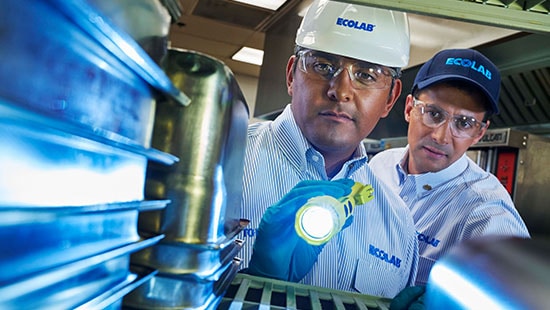How to Prevent Large Fly Problems

Large flies pose major health and food-safety risks to restaurants and businesses. But there are steps you and your pest management provider can take to minimize risk and protect your profit and brand.
Sanitation
An outside-in approach is a proven strategy to eliminate and prevent flies. Good sanitation practices on the outside of your facility can create an entry barrier for flies, and good sanitation practices inside reduce the reasons for flies to enter and ensures there are no breeding opportunities inside.
Large flies (aka filth flies) can actively move to warm areas and can spread to your facility from adjacent properties. They breed in garbage, trash compactors and overripe or rotting vegetables. By keeping your environment clean, flies have little incentive to come in or near your facility.
- Keep garbage areas clean and away from the building when possible; close receptacles with tight-fitting covers.
- Bag and seal garbage in durable plastic garbage bags; under-stuff and tie off garbage bags to eliminate spillage.
- Pave or seal area beneath and around dumpsters.
- Remove standing water, weeds, tall grass and other excessive vegetation to reduce breeding areas.
- Remove clutter and items stored on the ground near the building.
- Periodically walk the property to pick up discarded food containers, spilled foods, and other garbage.
Exclusion
Exclusion helps keep houseflies from entering the facility:
- Inspect and seal doors and keep them in good condition.
- During deliveries, don’t allow doors to be propped open for extended periods of time.
- In high fly-pressure locations, loading dock doors and service entries should have air curtains in place where possible. Air curtains should be inspected frequently to ensure proper function and to make sure they are not being turned off by day staff.
- Windows that open to the outside should have properly fitting, 20-mesh screens.
- Keep doors closed as much as possible, or use double-door vestibules, air doors, self-closing doors or plastic-strip doors where needed.
- Check positive/negative air pressure of entryways. Negative interior pressure can pull flying insects into the facility. HVAC system adjustments can often correct this.
Suppression
Suppression helps quickly remove large flies that have entered the facility.
- Clean up food debris and keep floors cleaned/mopped to avoid standing water or accumulated condensation.
- Ensure that sanitation practices include periodic deep cleaning beneath plumbing lines and equipment.
- Discreet fly lights installed inside your facility offer a non-pesticide approach to reducing indoor fly populations.
The best solution for fly prevention is to give them no reason or way to come in. Ecolab Service Specialists are trained to monitor and address fly activity, identify sanitation and structural issues related to large fly presence, and provide recommendations on improving conditions to reduce fly activity.



